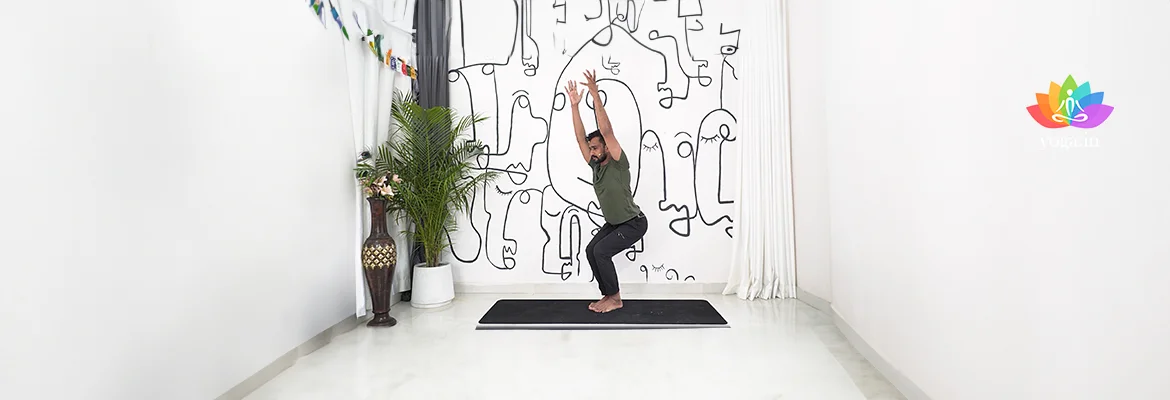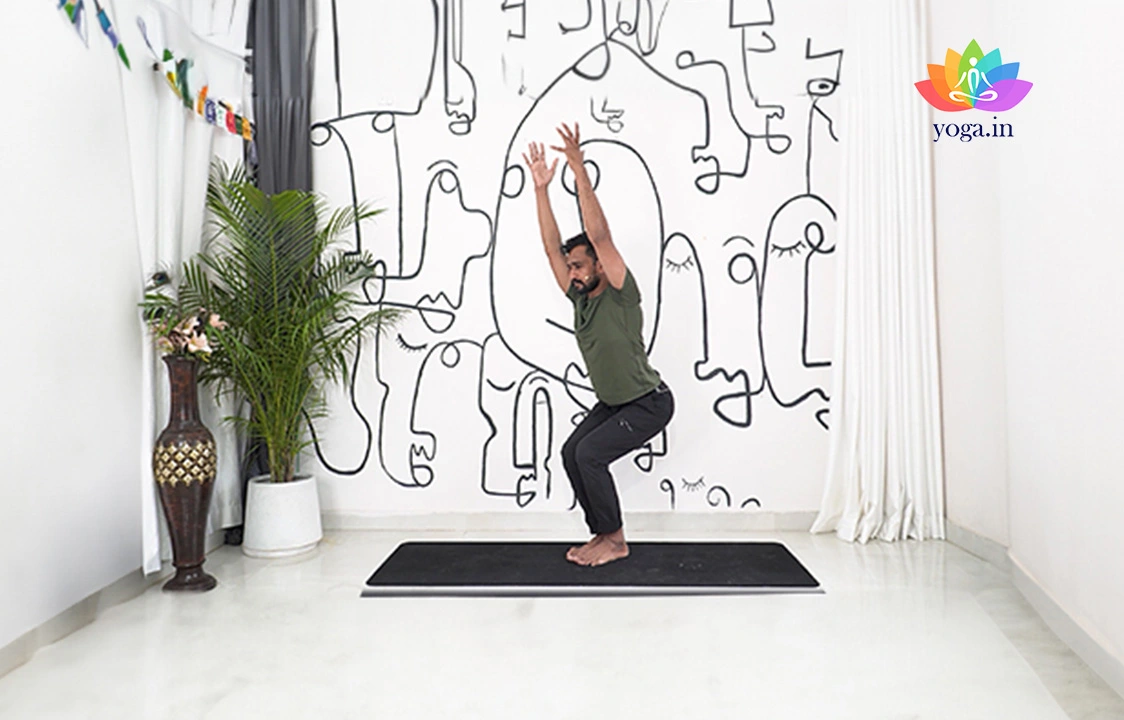Stand straight in Tadasana with your feet slightly apart and arms resting by your sides.
Introduction to the Asana
The Sanskrit name is derived from Utkata (उत्कटा) meaning “powerful” or “fierce” and āsana (आसन) meaning “posture” or “seat”.
Step to get in the pose
-
-
Take a deep breath and feel the energy flowing through your body.
-
While exhaling, lower your hips and lean your knees as if resting on an invisible chair.
-
Keep your thighs as parallel to the floor as possible and your knees over your ankles.
-
Slowly inhale and raise your arms over the head joining the palms.
-
Keep your arms parallel to the floor.
-
Stretch your arms straight not bending the elbows.
-
Gaze straight ahead or slightly up.
-
Balance and be in the pose for a minute.
-
Feel the heat and power in your legs, the stability in your core, and the openness in your chest.
-
Exhale, straighten the legs, lower the arms & come back to Tadasana.
Common mistakes and pitfalls
-
Squeezing of the shoulders closer to the ears.
-
Leaning too far with the knees going forward ahead of feet.
-
Having one knee slightly in front of the other.
Benefits
-
Reduces flat Feet.
-
Builds endurance.
-
Improves postures.
-
Tones & strengthens the core muscles, ankles, legs, thighs, calves and spine.
-
Stretches shoulders, chest, arms and lower back.
-
Tones the hips and lower abdomen.
-
Corrects imbalances in the pelvis.
-
Relieves Constipation and acidity.
-
Stimulates circulation.
-
Relieves heart issues.
-
Calms and relaxes the nervous system.
Contraindication
-
Avoid in case of high or low blood pressure, vertigo, or migraine.
-
Avoid in case of hip, knee, shoulder, or ankle injuries
-
Avoid in case of back pain.
-
If suffering from a headache.
-
Avoid during mensuration.




